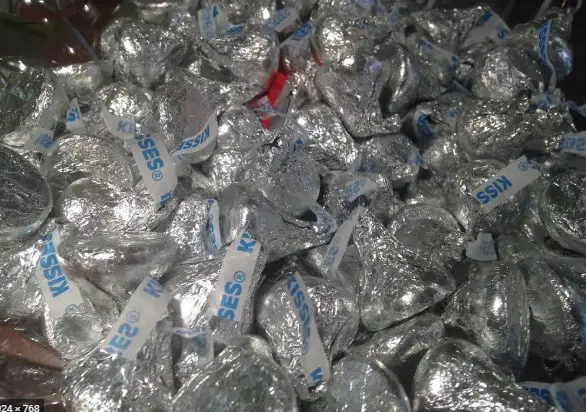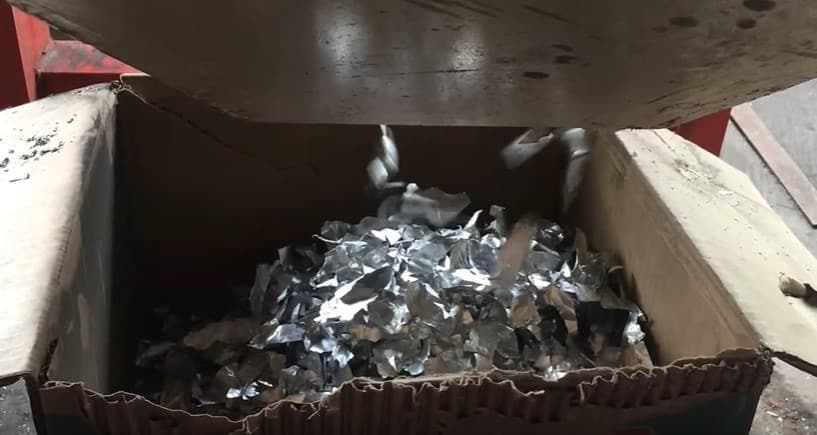How To Recycle Aluminum Foil And Is It Biodegradable
Do you find yourself using aluminum foil frequently in your kitchen? While it’s a convenient tool for cooking and food storage, many people wonder about the environmental impact of this material. Is aluminum foil biodegradable? And if not, how can we recycle it properly to reduce waste?
Aluminum is one of the most widely used metals in the world, and recycling it has numerous benefits for the environment. However, when it comes to aluminum foil specifically, there are some common misconceptions about its recyclability and biodegradability that need to be addressed.
In this article, we’ll explore what makes aluminum foil difficult to break down naturally, as well as practical tips for recycling it effectively.
The Environmental Impact Of Aluminum Foil
Like a shiny knight in armor, aluminum foil has long been the savior of leftovers and picnic sandwiches. But with its convenience comes an environmental cost that can no longer be ignored. The production of aluminum foil contributes to greenhouse gas emissions and depletes natural resources. It’s time we consider reducing waste by exploring alternatives to this beloved kitchen staple.
To put things into perspective, producing one ton of aluminum releases about 16 tons of carbon dioxide into the atmosphere. Additionally, bauxite ore – the primary raw material used to make aluminum – is a non-renewable resource that takes hundreds of years to regenerate.
As consumers become more conscious about their impact on the environment, it’s important for us to seek out sustainable options and reduce our dependence on single-use products like aluminum foil.
Why Aluminum Foil Is Not Biodegradable
After discussing the environmental impact of aluminum foil, it is important to address how to properly dispose of it.
Aluminum foil waste can be recycled, but it must be clean and free of food debris. This means wiping or rinsing off any leftover food before placing it in a recycling bin.
However, not all municipalities accept aluminum foil for recycling, so it’s important to check with your local recycling center first.
If you cannot recycle your aluminum foil, do not throw it in the trash. Unlike other materials that eventually break down in landfills, aluminum foil does not biodegrade.
It will take hundreds of years for the material to decompose completely, which poses a significant problem for landfill disposal. Instead, try reusing the foil as much as possible before ultimately disposing of it properly according to your local regulations.
By reducing our use and proper disposal methods, we can lessen the negative impact on our environment caused by this common household item.
Understanding The Recycling Process
Recycling aluminum foil is an excellent way to reduce the amount of waste that ends up in landfills.
The recycling process for aluminum foil involves melting it down and then using the resulting material to create new products.
This means that recycled aluminum can be used over and over again, making it a sustainable option.
One common misconception about recycling is that it is always more expensive than simply throwing things away.
However, this is not necessarily true.
While there may be upfront costs associated with setting up a recycling program, the long-term benefits are significant.
Recycling also helps conserve natural resources and reduces greenhouse gas emissions, making it an important part of any sustainability plan.
Tips For Properly Recycling Aluminum Foil
Understanding the recycling process is crucial in determining how to properly recycle aluminum foil.
While aluminum foil is 100% recyclable, it can only be recycled if it’s clean and free of food residue.
Therefore, before recycling your used aluminum foil, make sure to rinse it thoroughly with water and allow it to dry completely.
Common mistakes people make when recycling aluminum foil include crumpling it up into a ball or placing it in the recycling bin with other materials such as plastic wrap or bags.
Doing so makes the recycling process more difficult and reduces the quality of the recycled material.
It’s important to check with your local recycling program for specific guidelines on how to recycle aluminum foil in your area.
Some programs may require you to place it in a separate bin while others may accept it along with other metals.
Properly recycling aluminum foil not only helps reduce waste but also conserves energy and resources needed for producing new products.
By following these tips and checking with your local recycling program, we can all do our part in creating a sustainable future.
Creative Ways To Reuse Aluminum Foil
I love reusing aluminum foil to bake, it’s such an amazing way to save money and help the environment.
Crafting art projects with aluminum foil is also a great way to be creative and get crafty.
I recently tried making jewelry with aluminum foil and it was surprisingly easy and fun!
It’s amazing how many different ways you can reuse aluminum foil.
You just have to get creative and think outside of the box.
Is aluminum foil biodegradable? Unfortunately, it isn’t, which is why it’s important to find ways to reuse it.
Reusing To Bake
Looking for baking alternatives that can help reduce waste? Look no further than your trusty roll of aluminum foil! Not only is it a versatile tool in the kitchen, but reusing it to bake can also be an eco-friendly choice.
Instead of using single-use parchment paper or disposable baking trays, simply line your pan with a sheet of aluminum foil and reuse it again and again. Plus, because aluminum foil is such a durable material, you’ll likely find that it holds up better over multiple uses than other options.
But what about its biodegradability? Unfortunately, aluminum foil is not considered biodegradable – meaning it won’t break down naturally over time like organic materials do. However, recycling is still an option when it comes to disposing of used foil.
Simply rinse off any food debris and place the clean sheet into your recycling bin. And remember: by reusing your foil as many times as possible before recycling it, you’re helping to minimize waste and prolonging the life cycle of this valuable resource.

Crafting Art Projects
Now that we’ve explored the eco-friendly benefits of reusing aluminum foil in the kitchen, let’s shift our focus to crafting art projects.
Did you know that aluminum foil can be transformed into stunning sculptures and recycled jewelry pieces?
The possibilities are endless when it comes to this versatile material.
For those looking to create unique home decor or statement pieces, try molding aluminum foil into abstract shapes or animals.
Not only is this a fun way to experiment with different textures and forms, but it also provides an opportunity to repurpose household items that would otherwise end up in the trash.
Alternatively, consider fashioning recycled foil jewelry by cutting out various shapes and attaching them together with jump rings or wire.
This technique allows for intricate designs and encourages creativity while reducing waste at the same time.
By incorporating used aluminum foil into your next art project, not only will you save money on supplies, but you’ll also be doing your part for the environment by giving new life to something that might have been discarded.
So why not give it a try?
Let your imagination run wild and see what kind of masterpieces you can create using just a roll of trusty old aluminum foil!
Making Jewelry
Let’s talk about jewelry making as another creative way to reuse aluminum foil. Upcycling ideas have been gaining popularity, and transforming used materials into wearable art pieces is one of them.
With just a few household tools, you can fashion unique accessories that are not only stylish but also eco-friendly. To start with, gather your supplies such as scissors, pliers, jump rings or wire and the aluminum foil from your kitchen.
You can begin by cutting out different shapes using templates or free-hand designs. Once you have enough pieces, link them together with jump rings or twist wires around them to create chains or charms for bracelets, necklaces or earrings.
The possibilities are endless when it comes to making jewelry from recycled aluminum foil!
Conclusion: Making Sustainable Choices In The Kitchen
Here’s a fun fact: Did you know that the kitchen is often considered one of the least eco-friendly rooms in a household?
Yes, I’m being sarcastic. It’s not exactly groundbreaking news.
But it doesn’t have to be this way! Making sustainable choices in the kitchen can make a significant impact on our environment and even save money.
One simple way to reduce waste is by composting food scraps instead of throwing them away. Composting provides valuable nutrients for soil and reduces methane emissions from landfills.
Additionally, using energy-efficient cooking methods such as induction cooktops or slow cookers can cut down on electricity usage and costs.
By making small changes like these, we can all do our part in creating a more sustainable future while still enjoying delicious meals at home.

Frequently Asked Questions
How Long Does It Take For Aluminum Foil To Decompose In A Landfill?
Aluminum foil is a common household item used for cooking and food storage. However, when disposed of improperly, it can have a significant impact on the landfill’s environment sustainability.
The decomposition process of aluminum foil in landfills takes around 400 years to complete, which means that every piece of foil ever produced still exists somewhere today. This prolonged lifespan contributes to the increase in greenhouse gases emitted by landfills worldwide.
Therefore, it is crucial to consider the landfill impact and environmental sustainability when disposing of aluminum foil or any other material that does not biodegrade quickly.
Can Aluminum Foil Be Recycled With Other Metals, Such As Cans And Jars?
According to the Aluminum Association, Americans throw away enough aluminum every three months to rebuild their entire commercial air fleet.
This statistic highlights the importance of recycling aluminum products such as foil, cans and jars.
While these items are all recyclable, they cannot be recycled together because they have different melting points.
At a scrap yard, aluminum foil is sorted during the process with other aluminum like beverage cans and food containers based on its thickness and quality before being melted down into new products.
Is There A Limit To How Many Times Aluminum Foil Can Be Recycled?
Aluminum foil is a highly recyclable material, and it can be reused numerous times before losing its integrity.
However, there is a limit to how many times aluminum foil can be recycled due to the recycling process itself.
Each time the foil is melted down during the recycling process, some of its original properties are lost, making it less effective for reuse after multiple cycles.
Nevertheless, recycling aluminum foil has a positive environmental impact as it reduces waste in landfills and conserves resources needed to produce new materials.

Are There Any Health Concerns Associated With Reusing Aluminum Foil?
Reusing aluminum foil may seem like a convenient option, but it also raises potential hazards that are worth considering.
While recycling is an eco-friendly approach to reduce waste, cleaning tips should be followed when reusing foil to avoid contamination from food particles or harmful chemicals.
It’s important to note that there are health concerns associated with overexposure to aluminum, which can lead to serious conditions such as Alzheimer’s disease.
Therefore, using caution and discretion while reusing aluminum foil can help prevent any adverse effects on our health and environment alike.
Like a delicate balancing act, we need to take care of the planet without compromising our well-being – and this includes being mindful about how we handle everyday items such as aluminum foil.
How Can I Tell If My Aluminum Foil Is Recyclable?
To determine if your aluminum foil is recyclable, you first need to identify its grade.
The most commonly used grade for household items is 1100, which can be recycled through curbside programs in many areas.
However, other grades such as 3003 and 8011 may not be accepted by some recycling centers due to their higher levels of contamination risks from food residue or other materials.
It’s important to clean the foil thoroughly before attempting to recycle it and avoid wrapping food that contains acidic or salty substances, as these can also increase the risk of contamination.
Despite being recyclable, aluminum foil is not biodegradable and takes hundreds of years to decompose in landfills.
Conclusion
In conclusion, aluminum foil is a widely used household item that can be recycled and reused.
While it may take up to 400 years for it to decompose in a landfill, recycling it with other metals can greatly reduce its environmental impact.
It’s important to note that there may be limits to how many times aluminum foil can be recycled due to the degradation of its quality over time.
However, by properly cleaning and preparing your aluminum foil for recycling, you can ensure that it gets turned into new products instead of ending up in a landfill.
By taking small steps like these, we can all do our part in protecting the environment and reducing waste.
Let’s continue to make conscious choices about our consumption and disposal habits, as every little bit counts towards creating a more sustainable future.